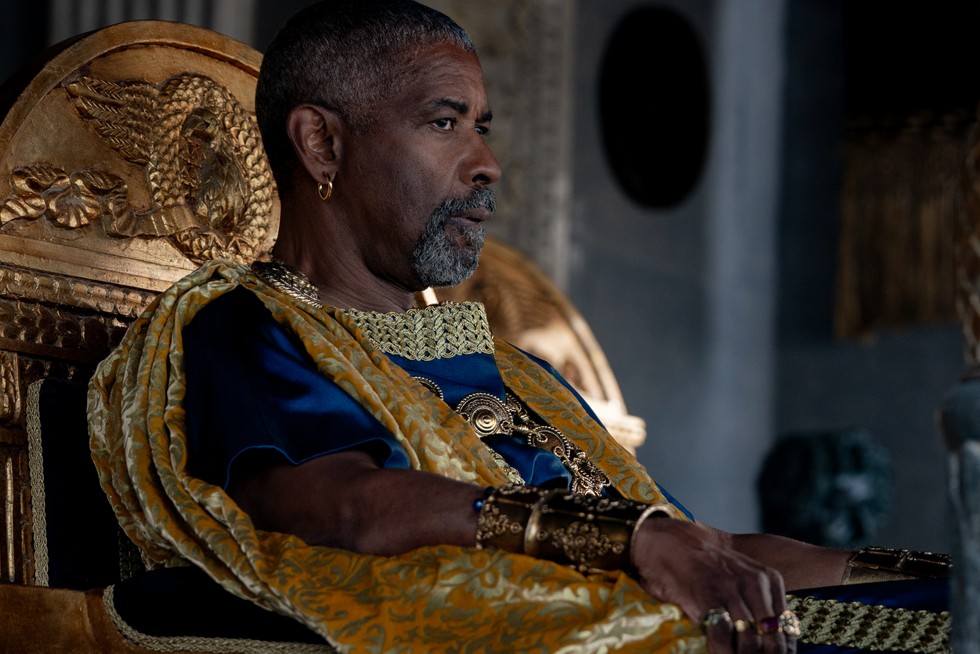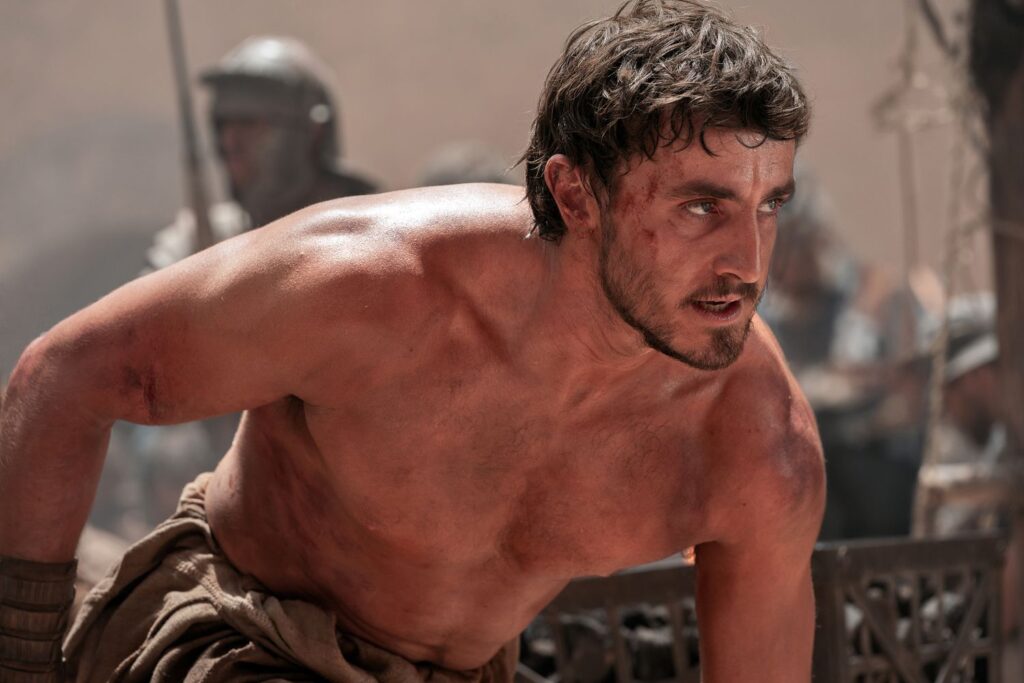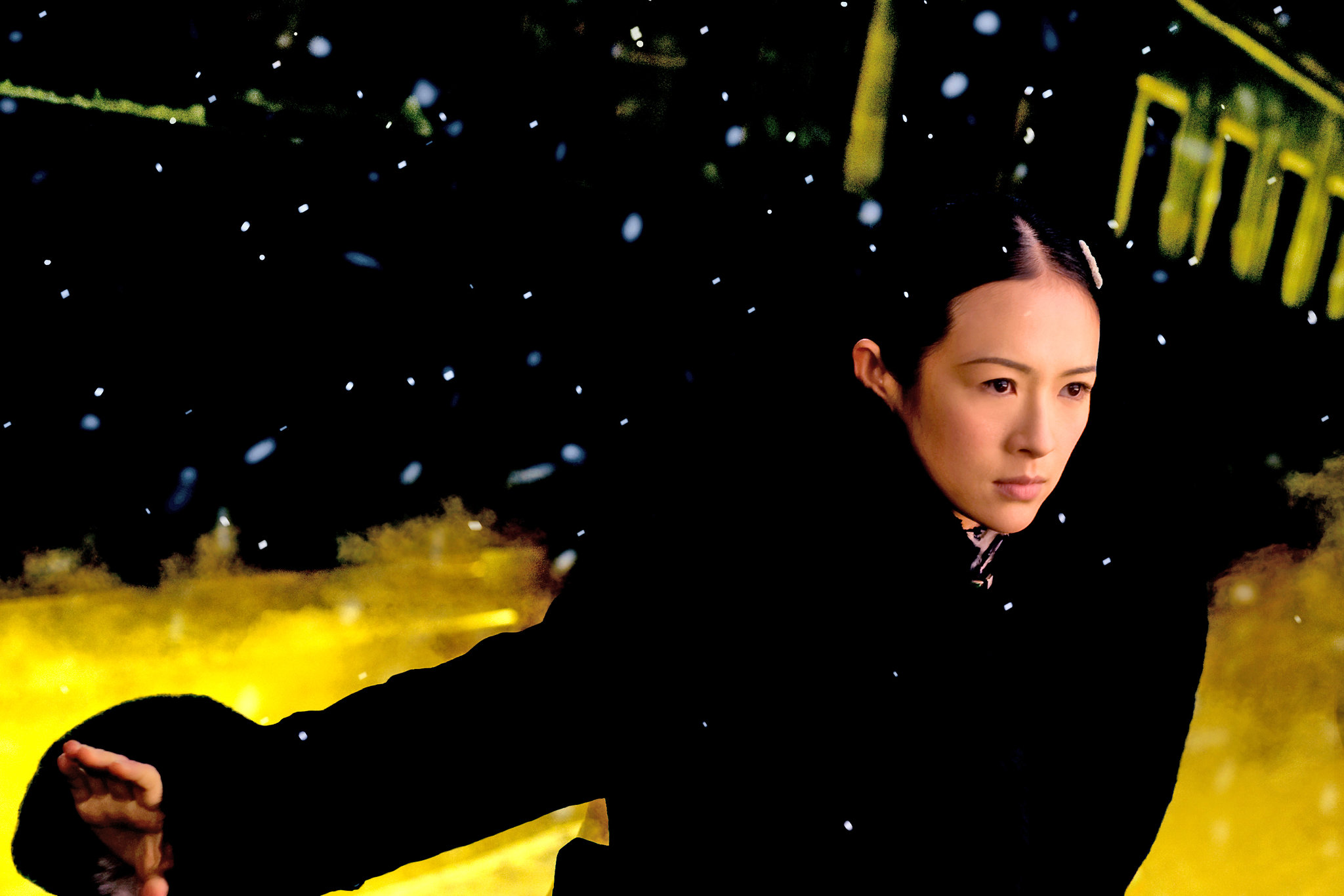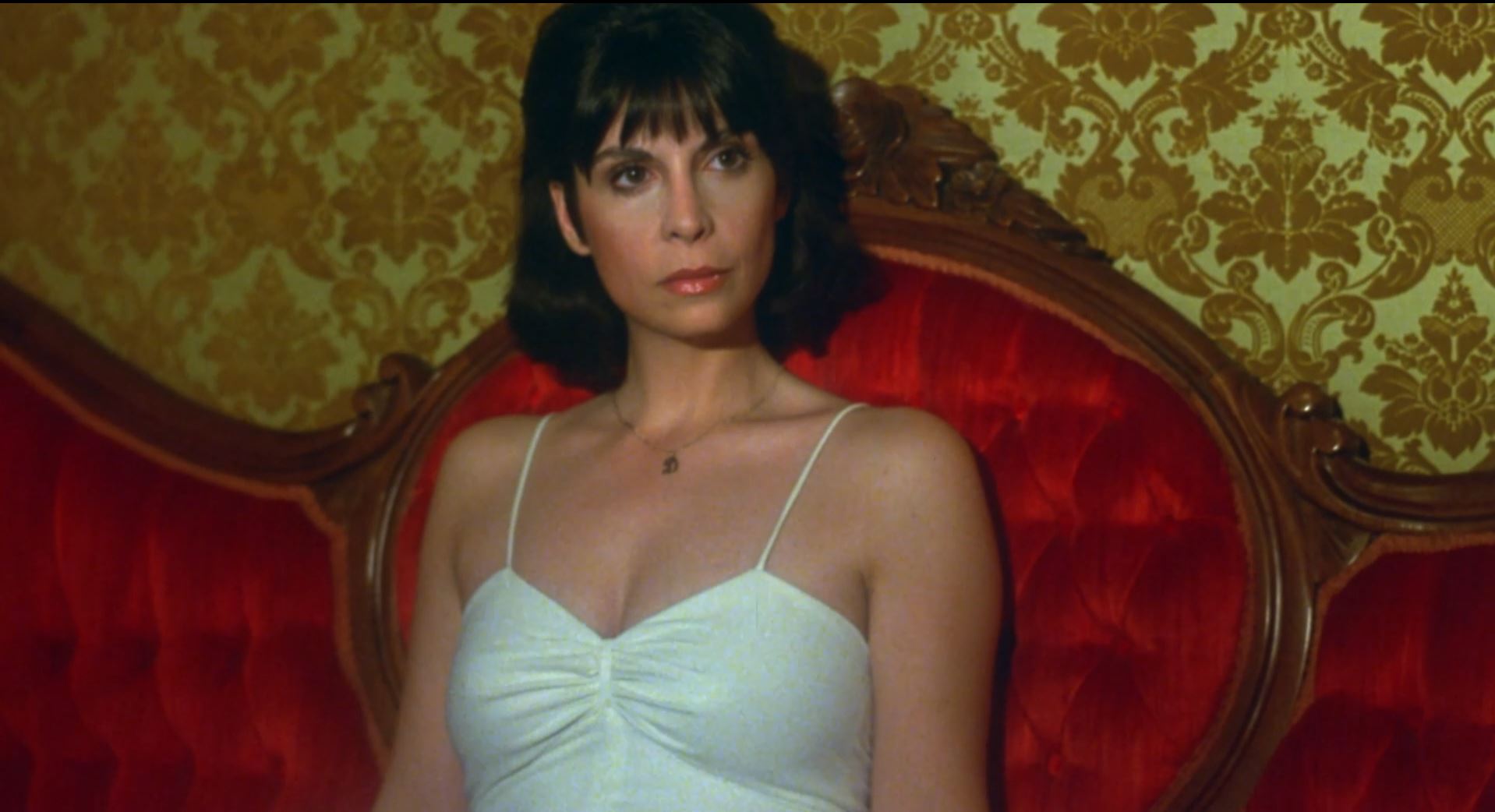Gladiator II opens on the eve of battle for the Numidian’s last remaining stronghold against the Roman Empire. As with the original Gladiator, we expect a gritty general leading his troops into glorious victory. Instead, we are introduced to Lucius (Paul Mescal) in barely concealed armor that leaves little to the imagination: a striking figure with hard-cut muscles. This theme of Lucius’ body on display is seen throughout the rest of the film, marked by his changes in state of undress. The objectification of the gladiator’s body mirrors the same fascination with female bodies in film through a lens of “feminization”. For the purpose of assigning a definition to “feminization” in this case, I am speaking to a character or aspect of a piece of art that traditionally is seen as masculine alternatively being potentially viewed as feminine, possibly subverting our interpretation of the work. This visual emphasis on Lucius’ physique—lingering shots of his arms, chest, and legs—flips the script on audience expectations for a “manly” movie by framing the male body as a central spectacle, much like female characters often are. When viewing Gladiator II, one is still seeing the sweat and muscles of the male character like a true hero, but the focus is not on the male body or even the traditionally masculine practices of wooing a woman or fighting for the honor of one. Instead, the viewer is seeing the costumes of skirts and sandals that accentuate waistlines, calves, and even feet which evoke this “feminization” through the lens of the camera. You are no longer seeing Lucius, the son of Maximus and the emperors’ new gladiator, but a physique of a male character with traditionally “feminine” body parts highlighted.
The clothing and silhouettes of secondary characters such as General Acacius (Pedro Pascal) and Macrinus (Denzel Washington) further highlight the film’s embrace of traditionally feminine aesthetics. With bright colors and flowing pieces, these luxurious characters sometimes appear literally dripping in gold. Macrinus showcases his authority through bold, bright colors and draping tunics that accentuate his stature and status. One striking scene shows Macrinus seated above the chaos of the Colosseum, delicately adjusting his jewelry and tunics while the gladiators battle below in blood and grime. The visual contrast is both jarring and deliberate, reinforcing the film’s thematic duality. While young men, captured and forced into the slavery of the games fight to the death in brutal means, Macrinus is, by comparison, practically effete as he tip-toes around the box seats of the Colosseum battle after battle. We see this each time the gladiators enter the arena and fight to the death. His soft spoken nature and fluid garments adorned with jewels are a stark contrast to the violence that he is partaking in as he weaves in and out among the guests. The traditional masculine character of Macrinus would wield a sharp tongue and an even sharper weapon, but through nontraditional ways, Macrinus wields his sharp mind and softness to become an unsuspecting villain, just as many female characters often are praised for: their “cunning” minds and sensual bodies.

Perhaps the most unshakable argument for Gladiator II being cast in a feminine light is Lucius’ emotional arc. His journey—centered on longing, love, and acceptance—directly challenges traditional narratives of masculinity in similar genres, where stoicism and brute strength reigns supreme. In line with his father Maximus, Lucius was enacting revenge on the man, and empire, who killed his family when his only true, original goal was to return to them. After that dream of physically being with his family was no more, Maximus set his sights on reuniting with his family in the afterlife. Both characters use the traditional form of masculinity by evoking violence in the gladiator arena, but what separates Maximus and his son Lucius is the added emotional element of Lucius not ever having a parental figure in his life. While Maximus had the mentorship of Marcus Aurelius in the first film, Lucius had to find his own way in life without the love of a mother or a father. As Lucius battles in the Colosseum and faces personal loss, he yearns for the acceptance he has never truly felt—the unfulfilled love of a mother, Lucilla, who sent him away from Rome and the admiration of an infamous father, Maximus, whom he only met once. With the dream of Rome within reach, Lucius fights his way through battle, laying down his sword to connect with his parents and complete his search for belonging. This need for connection and fulfillment mirrors the emotional journeys of female protagonists. Unlike Maximus, Lucius needs this acceptance to feel full and complete his journey of self-acceptance. He fights for strength and honor through his yearning for familial acceptance, which is the “feminization” of most female and romance art pieces at their core.
Ridley Scott’s sequel funnels grit into emotion, combining objectification, intricate costume design, and a yearning for belonging to craft a narrative that is centered around femininity. By layering these traditionally feminine themes into a genre dominated by grit and violence, Gladiator II not only reframes its hero, but also enriches the story for a modern audience.



